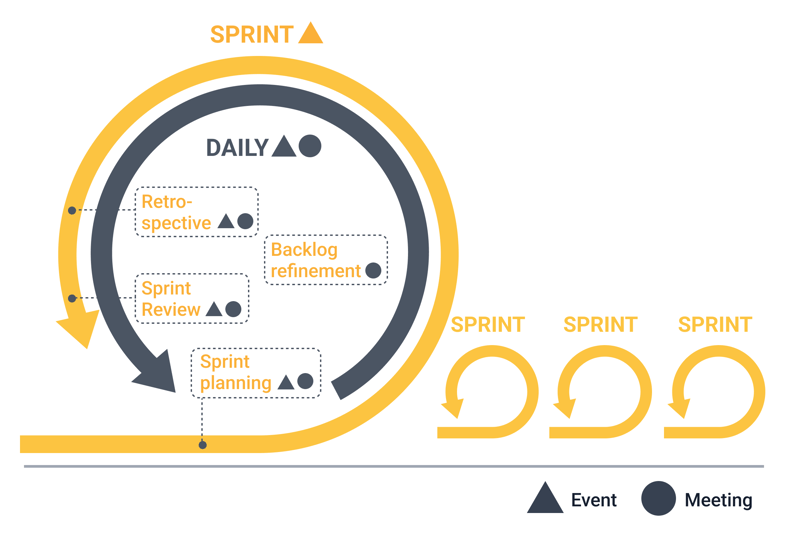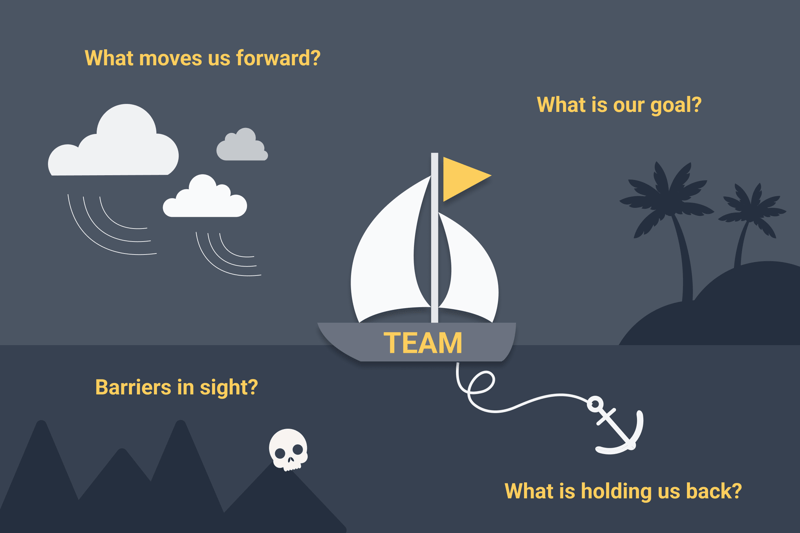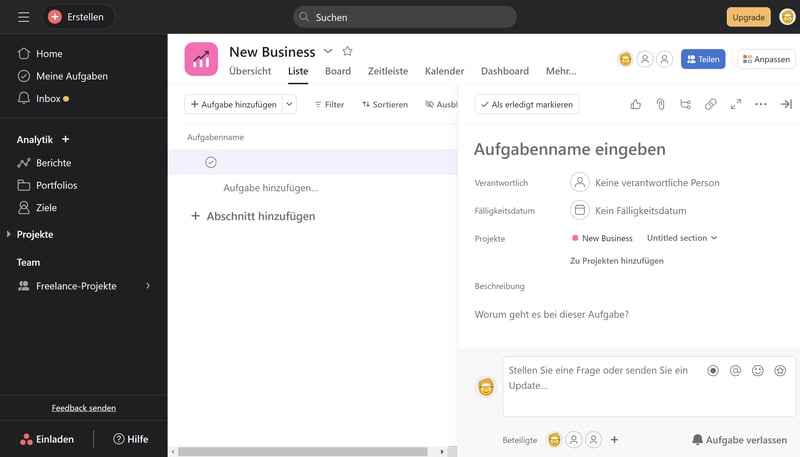4, 5, or 6 Scrum Events? A Look at Scrum Events and Meetings
Have you ever checked online to see how many Scrum events there are? If so, you've probably wondered why their number varies between 4 and 6. For everything else in Scrum, there's lots of precision and rules - could it be a mistake? And what happens during a Scrum event anyway?
Below, we'll let you know what the different numbers mean, what they are, and how Scrum events differ from Scrum meetings. You won't only better understand how Scrum events are structured and their objectives but also get valuable tips about how they work in practice.
What Are Scrum Events?
Scrum is a framework, with Scrum events being specific, mandated occurrences. Each event serves a particular purpose and happens at a specific time.
The Scrum Guide defines five events:
- 1.
The Sprint
- 2.
Sprint Planning
- 3.
Daily Scrum
- 4.
Sprint Review
- 5.
Sprint Retrospective
With the exception of "The Sprint", the other four events are also meetings. In contrast, "The Sprint" is the entire framework that includes the other four events.
All Scrum events have the following characteristics:
Occur regularly
Moderated (Exception: "The Sprint")
Kept within the timebox
In everyday use, a Scrum meeting is used as a synonym for a Scrum event. However, this isn't technically accurate: Not every Scrum event is a meeting, and not every Scrum meeting is an event.
Those who are already familiar with Scrum will likely have heard of backlog refinement. Is this an event? Sort of: Strictly speaking, it's a meeting and not defined as an event in the Scrum Guide.
We've visualized the most important Scrum events in the graphic below. This provides you with a visual aid to help determine whether something is an event, a meeting, or both:

An overview of Scrum events and meetings.
The 5 Scrum Events
Next, we'll take a closer look at the five Scrum events:
The Sprint
In Scrum, "The Sprint" is a recurring cycle that can last from one to four weeks. After the team has decided upon its length, all successive sprints are just as long and cannot be adjusted or modified. The objective of a sprint is to achieve progress towards a specific product or goal.
Unlike other events, "The Sprint" is not moderated. In fact, all other events actually occur within "The Sprint". As soon as a sprint finishes, the next one begins, with no pause between cycles.
Sprint Planning
"Sprint Planning" is where the sprint backlog is defined, based on an examination of the product backlog. The participants agree about what should be completed or delivered at the end of "The Sprint". A prioritized and curated product backlog is necessary to ensure that everything runs smoothly.
This step gives the upcoming sprint a foundation and is its first meeting. Its length corresponds to that of "The Sprint". Will this sprint last four weeks? If so, the planning meeting shouldn't take longer than eight hours. For a two-week sprint, planning will last only four hours.
Typically, this meeting can be subdivided into two phases:
Sprint Planning 1 answers the question "What?" The team meets with the Scrum Product Owner, agrees on sprint goals, and selects tasks from the product backlog.
During Sprint Planning 2, participants discuss the tasks in detail. This phase is more about jointly answering how a sprint's goals can be achieved. If posed as a question, this meeting answers the sprint's "How?"
Daily Scrum
The Daily Scrum is intended to strengthen collaboration within the development team and give an estimate of whether the team can reach a sprint's goal.
As its name suggests, this event is held every day and lasts exactly 15 minutes, regardless of sprint length. Team members can share their achievements or obstacles. This helps to maintain focus on individual tasks and their completion, to identify difficulties, and to maximize the likelihood of achieving a sprint's targets.
The Scrum Guide suggests three questions that every team member should be able to answer at the Daily Scrum:
What have I done since the last Daily?
What will I complete by the next Daily?
Are there any obstacles or challenges in my way?
The team can structure this meeting differently, so long as it's conducive to the project's goal. In addition, everyone should have an opportunity to speak. If the team cannot resolve an "Impediment" during the meeting, the Scrum Master is responsible for doing so afterward.
Sprint Review
The Sprint Review is the second-to-last Scrum meeting and serves to present and discuss all progress and completed tasks.
This is the only event non-team members, such as stakeholders and management, can attend. As such, it offers a significant opportunity to recognize the team's achievements as well as to provide and receive constructive feedback. The goals of this meeting are to demonstrate value and ensure that the customer's interests have been catered to.
Does this mean that you need to create an elaborate presentation? No! That would be a waste of resources and be anti-Scrum. Instead, developments should be presented live, even if they aren't complete or finished.
External feedback might give rise to additional work packages (project items), that the Product Owner can then integrate into future sprints. Keep in mind that this meeting's length corresponds to that of its sprint: A four-week sprint should only have a four-hour review, whereas that number is halved for a two-week sprint.
Sprint Retrospective
The Retrospective is the final sprint meeting before the next cycle begins (with "Sprint Planning"). The team reviews the previous sprint in terms of teamwork and process efficiency.
This event has nothing to do with work packages, but rather, how the team can improve collaboration in the future. The Scrum Guide suggests a maximum length of three hours for this meeting (for a four-week sprint). For a two-week Sprint, the Retrospective should last at most 90 minutes.

There are many ways to structure a Sprint Retrospective: Above, a sailboat is used to visualize the kinds of questions that should be asked.
Be sure to check out our guide to find out everything you need to know about Retrospectives:
Another Sprint Meeting: Backlog Refinement
Even though backlog refinement is the prerogative of the Product Owner and isn't a dedicated Scrum event, it's still an important Sprint meeting. A well-structured backlog can provide a sturdy foundation for "Sprint Planning".
Only when the team has accurately understood User Stories, can reliable planning begin. During a backlog refinement, the team discusses the backlog in detail and the Product Owner answers any questions. This is sometimes referred to as an estimation meeting since it helps to evaluate new User Stories and determine what sort of effort they would require to implement.
Unlike the five Scrum events, this meeting is not governed by a timebox. Instead, the Scrum Guide recommends that the Product Owner only allocate 10% of the project's total time to backlog refinement.
Brief Tabular Overview of Events and Meetings
We've summarized the most important aspects of Scrum events and meetings in the tables below:
Event/ Meeting | Participants | Timebox | Objective |
|---|---|---|---|
Sprint (event) | Scrum team (development team, Product Owner, Scrum Master) | 1 - 4 weeks (always the same length) | Delivery of a product or Increment |
Sprint Planning (event + meeting) | Scrum team | 1-week sprint: 2h 2-week sprint: 4h 3-week sprint: 6h 4-week sprint: 8h | Define and set sprint goals |
Daily Scrum (event + meeting) | Development team and Scrum Master | 15 minutes | Discuss progress and impediments |
Sprint Review (event + meeting) | Scrum team, internal and external stakeholders, management | 1-week sprint: 1h 2-week sprint: 2h 3-week sprint: 3h 4-week sprint: 4h | Presentation of sprint results and solicitation of feedback |
Retrospective (event + meeting) | Scrum team | 1-week sprint: 45 minutes 2-week sprint: 1h 30 minutes 3-week sprint: 2h 15 minutes 4-week sprint: 3h | Discussion and improvement of collaboration and processes |
Backlog Refinement (meeting) | Scrum team | No timebox, however, should not exceed 10% of the development team's capacity | Curation and evaluation of User Stories |
Scrum Events in Practice
Scrum events and meetings can consume lots of time and effort. For that reason, many managers question the necessity of these meetings and whether the process could be more streamlined.
Ken Schwaber and Jeff Sutherland, Scrum's creators, have a clear answer: Each event is important and should be conducted in its entirety. Only in this way is it possible to guarantee that the Scrum process works and that the team maximizes its full potential. To ensure that the project team has the best chance for success, all participants must understand the framework.
Consulting a Scrum expert can be particularly helpful during implementation. Other important elements include good communication along with clear and realistic expectations. Only in this way can the team function as a unit.
Events should never create extra work, but rather, support ongoing efforts and help focus attention on the achievement of goals. To maximize the positive impact of meetings, internalize their characteristics and purposes.
Scrum Event Tips
Below, we've compiled several tips that can help ensure that every meeting is a success:
Remember the meeting's purpose: Every event and meeting serves a different purpose. Don't lose track of this or go off script.
Use the timebox: No event or meeting should exceed the time it's allocated in the Scrum Guide. Pay particularly close attention to this when setting an agenda, and, if necessary, specify time slots for individual items and activities.
Foster a collaborative environment: Encourage team members to speak up and contribute at meetings. Open communication is a key ingredient in any recipe for success.
Use visualizations: Visual material, like presentations, graphs, and diagrams, makes data and processes easier to understand. The same is true for digital meetings.
Improve Scrum events: Use the Retrospective to improve other Scrum meetings. Gather feedback or creative ideas from among your team members as to how processes can be enhanced.
Stay flexible: Scrum is all about embracing change. Try out different approaches and methods without adjusting the framework.
Tools and Aids
There are many tools that can help you with Scrum events. We'd like to introduce a few of them here.

Asana is a popular project management tool.
Jira: Developed by Atlassian, this agile project management tool assists software development teams. With it, they can plan, track, and deploy developments. Here too, it's easy to manage a backlog.
Miro: Are you looking for a collaborative whiteboard to use during Scrum events? With Miro, you can work with a variety of different features in a single interface.
Toggl: This helps to keep tabs on the length of each meeting. Miro users, however, can benefit from that platform's integrated timer without needing to install an extra app.
Retromat: Would you like to use new ideas and methods in your Scrum's upcoming Retrospective? Retromat offers plenty of both, along with comprehensive explanations and lots of examples.
While most Scrum meetings can be held in person, the modern business world has embraced hybrid or even entirely digital formats. Video conference solutions or other collaborative tools with video capability are essential these days. Closeness and trust are likewise important elements of successful Scrum meetings.
Conclusion
Scrum without events and meetings just wouldn't be the same. Its creators do not recommend skipping any of them, since each event gives the method its framework and structure. Every event has its own characteristics and goals, which, when taken together, ensure that the team can complete its objectives.
To reach your goals, familiarize yourself with the individual events and internalize our hints. When combined with the right tool, which should help to arrange and plan event agendas, you can get the most out of every meeting and put your team on the path to success.
Frequently Asked Questions
There are five Scrum events: The Sprint, Sprint Planning, Daily Scrum, Sprint Review, and Sprint Retrospective.
No: The Sprint is not a meeting. However, Sprint Planning, Daily Scrum, Sprint Review, and Sprint Retrospective are events and meetings.
No: Even though it's an important meeting held during a Sprint, Backlog refinement is not a Scrum event.
Scrum works because of its structure and framework. Every event serves a specific purpose and therefore, needs to be held.












